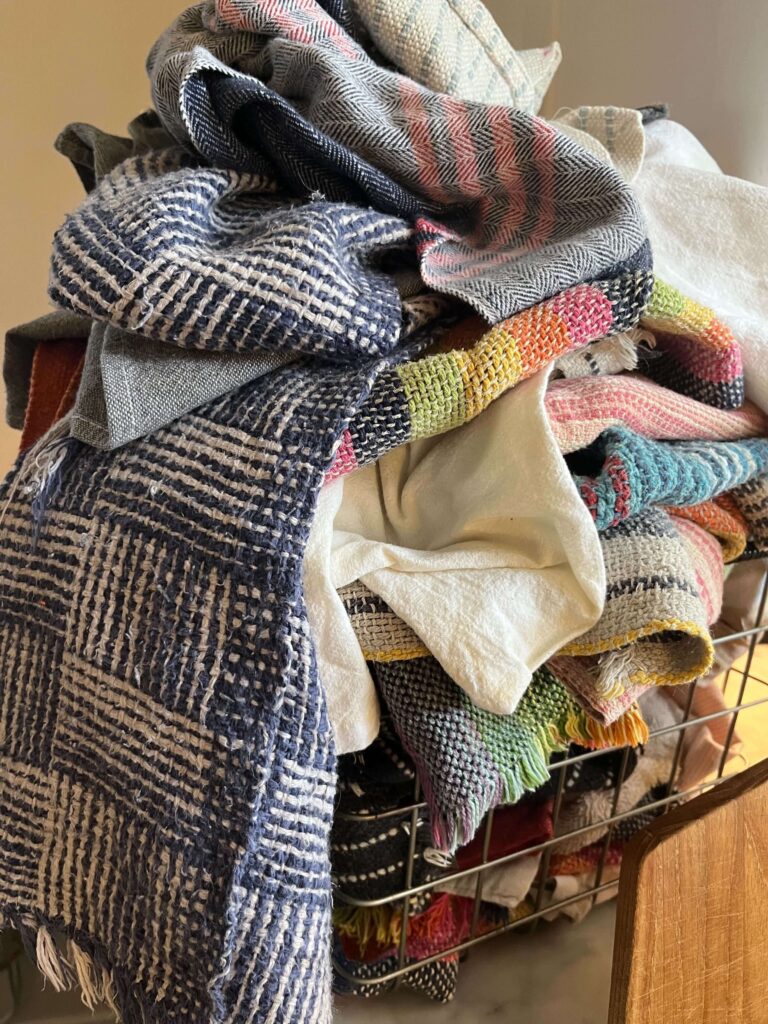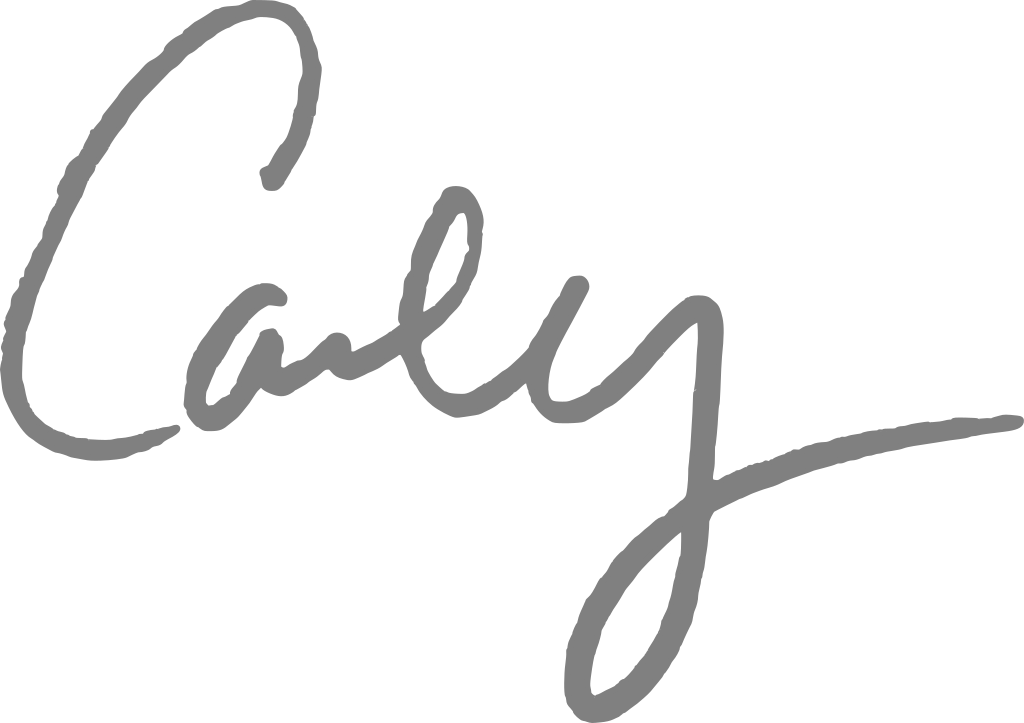As I am aging and getting better at collecting years, I find that I am less results-oriented in my fiber work. I no longer care so much if things take a lot of time or a little, or how many things I finish each year. Maybe it’s that time feels different now, or maybe it’s the confidence you gain in middle age, but I know my value isn’t solely based on my productivity.
I have changed my weaving goals from having a final product, to weaving as a daily practice. The joy is in the work, and the balance it gives to my life; not the result alone. I weave because of the labor, not in spite of it.
Of course, the irony is that I now have more handwovens around me than I know what to do with. It turns out that cracking the code to productivity is simply doing the work (if only I knew that in my younger days!).
Yards of multicolored cloth are shoved in my drawers, my closets, under my bed, and tucked in bookshelves. Some items are tagged to sell, many set aside to give to friends, and others I just keep in a box to admire from time to time to see how far I have grown.

One day, I needed to wipe up a spill, so I hurriedly reached into our linen closet, and grabbed one of these stashed-away chunks of cotton cloth.
“WAIT,” I thought. “I couldn’t possibly use my handwoven cloth to mop up the wine slosh! It will ruin it!” And then I thought, “Huh, maybe I should use this rag to clean this spill. What else will I use it for?”.
If you’ve sold or gifted hand-woven towels you’ve probably heard something like this: “I couldn’t ever use something so precious on just dishes”. The lowly rag is on the bottom rung of a cloth’s usable life; it’s last reincarnation before it’s tossed in the trash bin. There certainly is a solid logic for that. Fabric is precious and time-consuming to make, we shouldn’t waste it. But could it be that we have too much cloth in our post-industrial lives? So much that even the rag no longer has value? After all, when everything was made by hand, even a cleaning cloth was a work of art.
A few years back, I took to the Marie Kondo housekeeping trend, recognizing the feeling I had when something “Sparks Joy”. Not only was it helpful in identifying the possessions I loved most, but it also helped me see the little things in my life that made me happy: my kids laughing, my dog’s adorable face when he’s sleeping, the first cup of coffee in the morning, and my closets full of handwoven goodies.
These moments are like islands, mini oases in the sea of life that can feel overwhelming and stressful. The more little islands, the more respites that I recognise, the more I weave those threads of pleasure to form the fabric of a day that is happier than the day before.
What better way to practice this than to use my most beloved, plush, colorful, and absorbent towels to clean my baseboards and dry my dishes? If I must clean, which I hate doing, then wouldn’t it be best to make it as pleasurable as possible? And what good will this little scrap do in a bin, in the dark under my bed?
This small pleasure, wiping life’s spills with a carefully designed woven item, is delightfully hedonistic. And if I were to give my me-made things an anthropomorphic personality, I feel like they would rather have a short, messy active life of service over a life tucked away, too precious to use. And if that isn’t a great allegory for life and weaving, I don’t know what is.

